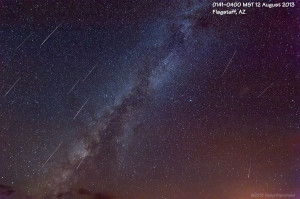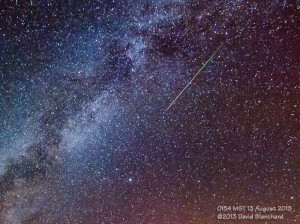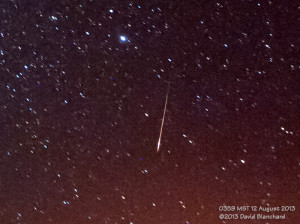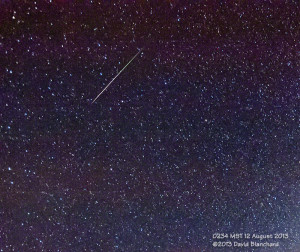There is a new comet currently visible through telescopes, binoculars and long-exposure photographs in the morning skies—and there are expectations that the comet will become bright enough to be seen with the unaided eye in the coming weeks.
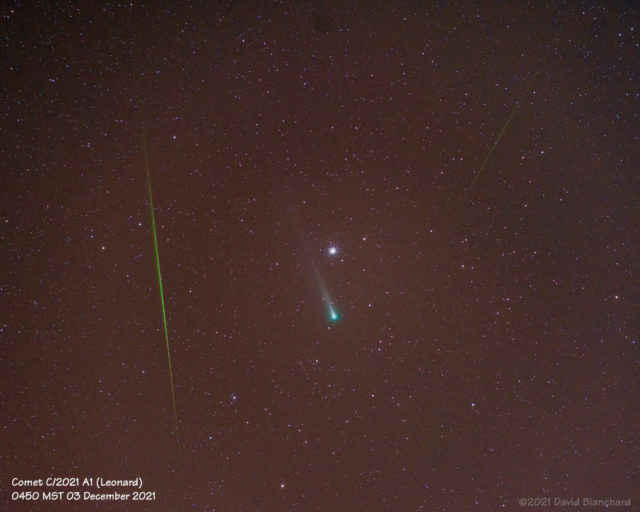
Comet C/2021 A1 (Leonard) was discovered by G. J. Leonard at the Mount Lemmon Observatory in early January 2021. The comet will make its closest approach to Earth on 12 December 2021 (~35 million km). It will make its closest approach to the Sun on 3 January 2022 and then will head out of the Solar System.
It has a current estimated magnitude of around +6 and is expected to brighten to +4 as it nears the Sun. Some forecasts call for a brightening to magnitude +2 making it visible even in the twilight hours. It is becoming likely that this will be the brightest comet of 2021.
This was my first attempt to photograph the comet. It was barely visible in binoculars (7×50) but was easily seen with even a short exposure on the camera. I set the camera to take 60 second exposures for an hour—at which time astronomical twilight would begin to brighten the eastern sky.
The photograph at the top was taken just a few minutes after the start of the session and shows two meteors (one bright and the other fairly dim) passing through the same portion of the sky as the comet. Also visible in the photograph is Messier 3 (M3 or NGC 5272), a globular cluster made up of around a half million stars.
Photo details: Nikon D750, Nikkor 180mm ED AI-S, ƒ/2.8, ISO 1600, 60 seconds; tracking with an iOptron Sky Tracker.
Below is a time-lapse animation of the images collected during that hour. The comet is moving at an ultrafast speed of ~71 km/second relative to Earth and that fast motion is easily seen in the animation.
Time-lapse imagery showing the motion of the comet from 0450–0550 MST on 03 December 2021.
I hope to have more opportunities to photograph this comet in both the morning sky and later in the month in the evening sky—especially if it brightens significantly.
